When it comes to choosing a camera, there are two main types: rangefinder and SLR. Each type has its benefits and drawbacks, which can make it difficult to decide which one is right for you. This article will discuss the key differences between these two types of cameras so that you can make an informed decision about which one is best for your needs.
What Are SLR Cameras?
SLR cameras are the most popular type of camera on the market and have been for many years. They are also sometimes called DSLR cameras, or digital single-lens reflex cameras.
An SLR camera has a mirror inside it that reflects light up into a pentaprism, which then reflects the image into your eye. This system is used because it allows the photographer to see exactly what the lens sees, through the viewfinder.
When you press the shutter button on an SLR camera, the mirror flips up out of the way and allows light to hit the image sensor directly. The image sensor then captures the image and stores it on a memory card [1].
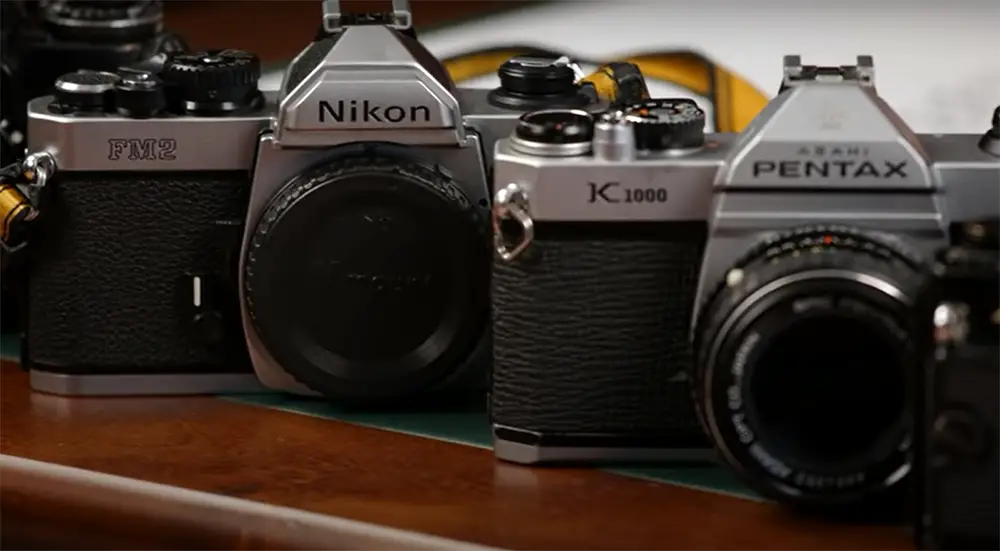
What About Digital Mirrorless Cameras?
Digital mirrorless cameras are a newer type of camera that is quickly gaining popularity.
Mirrorless cameras also have an image sensor that captures the image, but they do not have a reflex mirror system. Instead, light from the lens hits the image sensor directly.
This means that mirrorless cameras are generally smaller and lighter than SLR cameras because they don’t need to accommodate a reflex mirror system.
Digital mirrorless cameras also have some other advantages over SLR cameras, such as being able to use electronic viewfinders (EVFs) and having silent shutter modes.
What About DSLR Cameras?
DSLR cameras are the most popular type of camera on the market and for good reason. They offer a great deal of flexibility and versatility, allowing you to shoot in a variety of different settings and scenarios. Moreover, DSLR cameras are generally more affordable than their rangefinder and SLR counterparts.
However, DSLR cameras also come with a few disadvantages. One of the biggest is that they can be quite heavy and bulky, making them difficult to carry around with you on a day-to-day basis. Additionally, DSLRs can be quite expensive, especially if you’re looking for one with all the bells and whistles. You may also be interested in DSLR vs. camcorder comparison.
What is a Rangefinder camera?
A rangefinder camera is a camera fitted with a rangefinder, typically a split-image or ground glass rangefinder. Rangefinder cameras were produced from the early 20th century until the 1980s when autofocus cameras became prevalent. The vast majority of film cameras used by professionals were rangefinders.

Another important advantage is that rangefinder cameras are usually significantly smaller and lighter than SLR cameras, making them much more portable.
One of the disadvantages of the rangefinder is that the viewfinders of rangefinder cameras do not show the image exactly as it will be captured; parallax error occurs because the viewfinder window is above and to one side of the lens, resulting in framing errors if not accounted for.
Another disadvantage is that rangefinders typically have shorter flange focal distances than SLRs, meaning that there is a limited selection of lenses available for use with a given camera body. This can be particularly problematic with wide-angle lenses; as of 2018, only three manufacturers produce wide-angle lenses for Leica-mount rangefinders, for example [2].
Differences between Rangefinder and DSLR cameras
Lens options
DSLR cameras have a wider range of lenses available to them. This is because DSLRs use a mirror system, which allows for a greater variety of lens designs. Meanwhile, rangefinder cameras generally only work with specific lenses designed for their use.
Additionally, DSLR cameras allow you to change the aperture and shutter speed without having to remove the lens from the camera body. With a rangefinder camera, you need to physically remove the lens to change these settings – something that can be quite tedious if you’re trying to make changes on the fly.
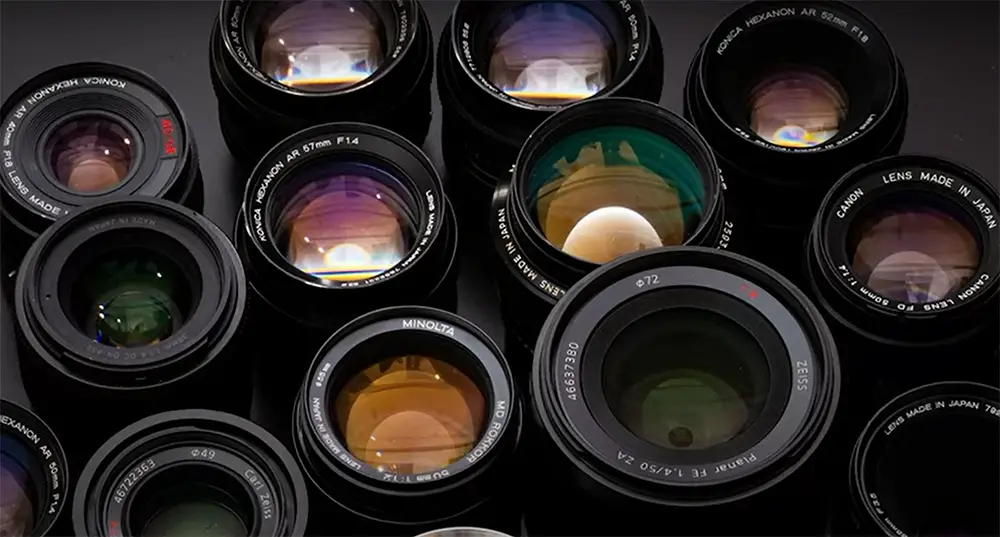
Finally, DSLR cameras typically offer more advanced features than their rangefinder counterparts. This includes things like built-in flash units, autofocus systems, and image stabilization. If you’re looking for a more simple camera, then a rangefinder might be a better option. But if you’re wanting something with more bells and whistles, then a DSLR is probably the way to go.
Viewfinder blockage
One of the biggest drawbacks of using a DSLR camera is that the viewfinder can be blocked when you’re using certain lenses. This is because the mirror system in DSLRs causes the viewfinder to be obstructed when certain lenses are attached.
This isn’t an issue with rangefinder cameras, as they don’t have a mirror system. This means that you’ll always have an unobstructed view through the viewfinder, no matter what lens you’re using.
Additionally, the lack of a mirror system also means that rangefinder cameras are typically smaller and more compact than DSLRs. If size and weight are important factors for you, then a rangefinder might be the better option.
Focusing
Focusing is another area where DSLRs and rangefinders differ. With a DSLR, you’re able to see the image through the viewfinder and focus on it directly.
Rangefinder cameras, on the other hand, use a separate viewfinder that’s located above the lens. This means that you’re not actually looking through the lens when you’re trying to focus. As a result, it can be more difficult to get an accurate focus with a rangefinder camera.
Field of View
DSLR cameras typically have a narrower field of view than rangefinder cameras. This is because DSLRs use a full-frame sensor, while rangefinders usually use a smaller sensor.
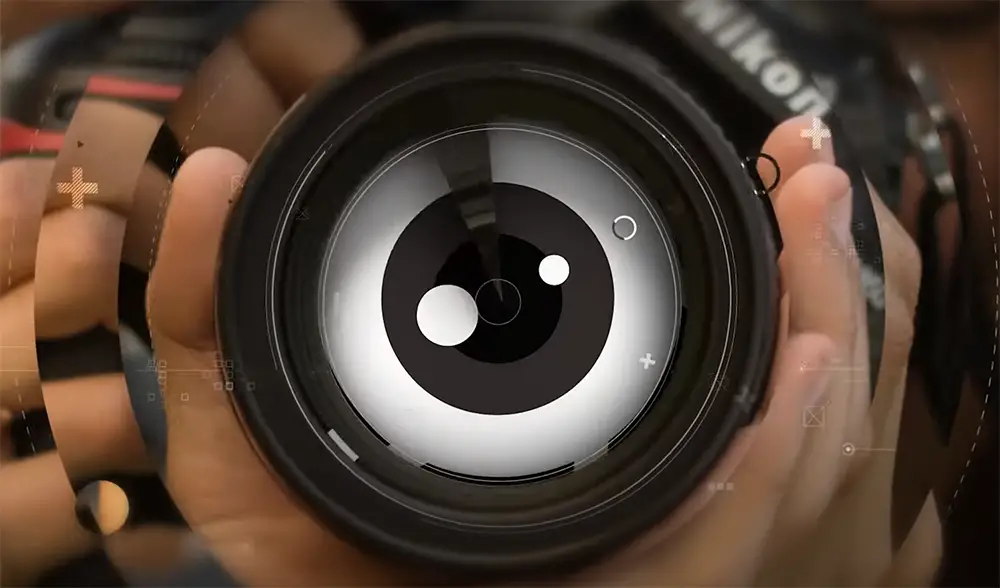
If you’re looking for a camera with a wider field of view, then a rangefinder might be the better option. But if you don’t mind sacrificing some field of view, then a DSLR could be worth considering.
Size and weight
As mentioned earlier, rangefinder cameras are typically smaller and more compact than DSLRs. This is because they don’t have a mirror system, which makes them less bulky overall.
If size and weight are important factors for you, then a rangefinder might be the better option. But if you’re willing to sacrifice some size and weight for features and performance, then a DSLR is not a good option.
Viewfinder blackouts
Another downside of using a DSLR camera is that the viewfinder can blackout when you’re using certain lenses. This is because the mirror system in DSLRs causes the viewfinder to be obstructed when certain lenses are attached.
This isn’t an issue with rangefinder cameras, as they don’t have a mirror system. This means that you’ll always have an unobstructed view through the viewfinder, no matter what lens you’re using.
If you want a camera with a clear and unobstructed viewfinder, then a rangefinder might be the better option for you. But if you’re willing to sacrifice some viewfinder clarity for features and performance, then a DSLR could be worth considering.
Viewfinder location
The location of the viewfinder is another key difference between DSLRs and rangefinders. With a DSLR, you’re able to see the image through the viewfinder and focus on it directly.
Rangefinder cameras, on the other hand, use a separate viewfinder that’s located above the lens. This means that you’re not looking through the lens when you’re trying to focus. As a result, it can be more difficult to get an accurate focus with a rangefinder camera.
If accuracy is important to you, then a DSLR might be the better option. But if you don’t mind sacrificing some focusing precision, then a rangefinder could be worth considering.
Focusing Tips With A Rangefinder Or SLR Camera
One of the main differences between a rangefinder and an SLR camera is how you focus. With a SLR, you look through the viewfinder and see the image directly. With a rangefinder, there’s a small window on the top or side of the camera that you use to line up two images.
If you want to take close-up photos with a SLR, you need to use a special lens called a macro lens. For rangefinders, all you need to do is get closer to your subject. This makes them ideal for street photography and other candid shots where you don’t want to be too obvious about taking a picture.
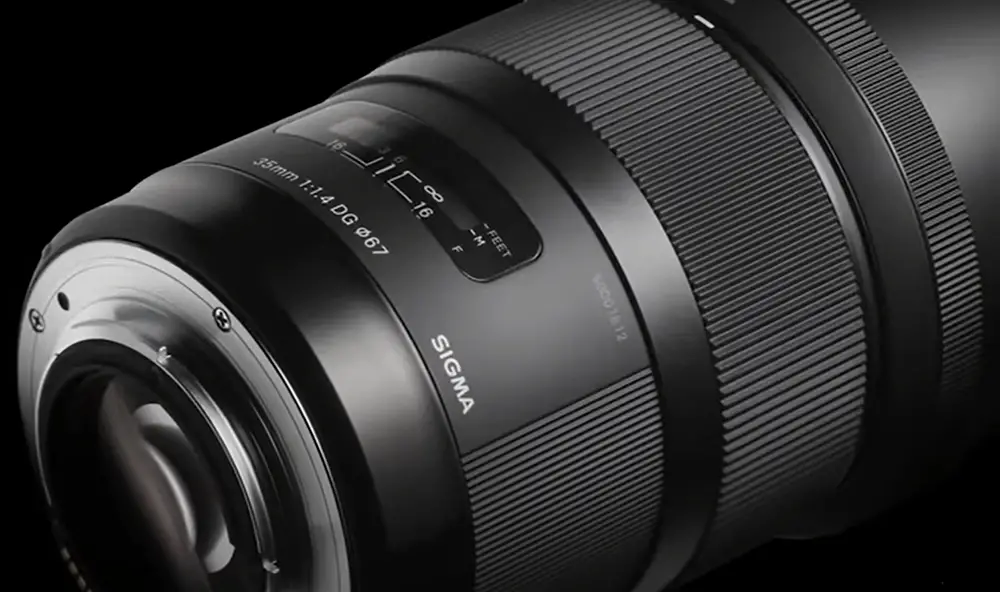
Rangefinders also have another advantage over SLRs when it comes to focusing. Because you’re looking through a separate viewfinder, you can focus without moving the camera. This means that you can keep your subject in the same place in the frame while you focus on something else.
SLRs have an advantage when it comes to action photography. The direct view through the lens lets you see exactly what will be in the photo, so you can follow a moving subject more easily. With a rangefinder, it’s easy to miss your target if they move too much.
Both rangefinders and SLRs have their pros and cons, but ultimately it’s up to you to decide which type of camera is right for your needs. If you want a compact camera that’s easy to carry around, a rangefinder is a good choice. If you need a camera that can take high-quality photos in all situations, an SLR is the way to go [3].
Pros and cons of SLR Cameras
SLR cameras have several advantages over rangefinder cameras. For one, they allow you to see exactly what the lens is seeing through the viewfinder. This makes it much easier to compose your shots and ensure that everything is in the frame. Additionally, SLRs tend to have longer battery life than rangefinders since they don’t have an electronic viewfinder constantly drawing power.
However, there are also some drawbacks to using an SLR camera. One of the biggest is that they can be quite bulky and heavy, making them difficult to carry around with you all day. Additionally, because of the mirror system inside SLR cameras, they tend to be noisier than rangefinders when taking photos.
If you’re trying to decide between a rangefinder and an SLR camera, it’s important to weigh the pros and cons of each type of camera to see which one is right for you.
Pros and cons of Rangefinders
Rangefinder cameras have a few advantages over their SLR counterparts. For one, they’re smaller and more compact, making them ideal for travel photography. They also tend to be quieter than SLRs, which can be important for street or wildlife photography.
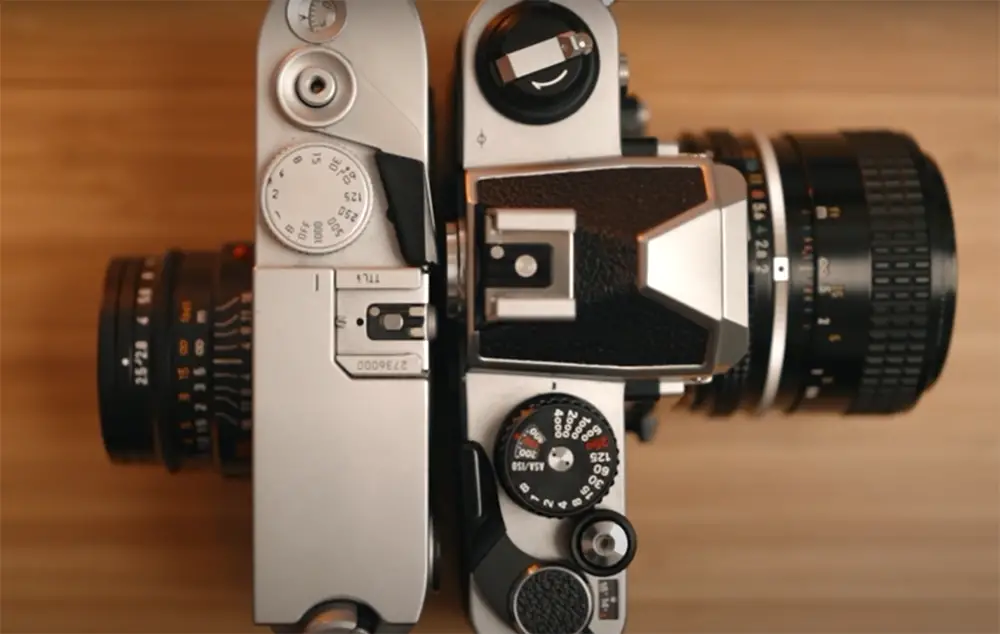
On the downside, rangefinders can be more difficult to use in low light conditions and don’t offer the same level of autofocus speed as an SLR. They also have a smaller selection of available lenses.
Rangefinder vs SLR for street photography
There are two main types of cameras that street photographers use: rangefinder and single-lens reflex (SLR). Both have their own unique set of benefits and drawbacks. In this article, we’ll go over the key differences between these two types of cameras to help you choose the right one for your needs.
Rangefinder cameras are smaller and more compact than SLRs, making them ideal for street photography. They’re also quieter since they don’t have a mirror that flips up when you take a picture. This can be beneficial if you’re trying to avoid attracting attention to yourself while photographing in public places. On the downside, rangefinder cameras have a limited field of view and can be more difficult to use in low light conditions.
SLR cameras, on the other hand, are larger and heavier than rangefinders. But they offer a few key advantages for street photography. First, they have a much wider field of view, making it easier to capture candid moments. Second, their autofocus systems are typically faster and more accurate than those found in rangefinders. And finally, SLRs perform better in low light thanks to their larger sensors.
So which type of camera is right for you? If you value compactness and discretion, then a rangefinder camera is probably your best bet. But if you need a wider field of view and better performance in low light conditions, then an SLR is the way to go. Ultimately, the decision comes down to your personal needs and preferences.
If you want to take pictures like a professional, read the following articles:
Rangefinder vs. SLR Cameras: Comparison Table
The table below presents a comparison of the main indicators between Rangefinder and SLR Cameras. Rangefinder and Single Lens Reflex (SLR) cameras are both popular choices among photographers, each offering unique features and advantages. Understanding their differences can help enthusiasts and professionals make informed decisions when selecting the most suitable camera for their needs.
| Indicators | Rangefinder Camera | SLR Camera |
|---|---|---|
| Focusing Mechanism | Manual focusing using rangefinder patch or focus peaking | Autofocus using phase detection or contrast detection |
| Viewfinder | Separate viewfinder window for framing and manual focusing | Single viewfinder that shows the exact image the lens sees |
| Size and Weight | Compact and lightweight due to simpler internal structure | Relatively larger and heavier due to the mirror box and prism |
| Lens Options | Limited range of lenses, often with manual aperture control | Wide variety of interchangeable lenses with auto-aperture control |
| Framing Accuracy | Parallax error may occur, reducing framing accuracy in close-up shots | Accurate framing due to the exact image representation in the viewfinder |
| Quiet Operation | Generally quieter as there is no mirror movement during shooting | May produce some noise due to the mirror movement |
| Depth of Field Preview | Not available in most rangefinder models | Available to preview depth of field before taking the shot |
| Image Quality | Typically produces sharp and high-quality images | Also produces sharp images, but lens quality plays a significant role |
| Price Range | Often more expensive, especially for premium rangefinder models | Wide range of prices depending on the brand and features |
The table compares the essential characteristics of Rangefinder and SLR cameras. The focusing mechanism in Rangefinder cameras relies on manual adjustments using a rangefinder patch or focus peaking, while SLR cameras employ autofocus systems through phase detection or contrast detection.
Rangefinder cameras have a separate viewfinder window for framing and manual focusing, which can lead to parallax errors in close-up shots. On the other hand, SLR cameras offer a single viewfinder that displays the exact image the lens sees, ensuring accurate framing.
Due to their simpler internal structure, rangefinder cameras are generally more compact and lightweight compared to SLR cameras, which include a mirror box and prism. This design also limits the range of lenses available for rangefinders, often with manual aperture control, while SLR cameras offer a wide variety of interchangeable lenses with auto-aperture control.
While rangefinder cameras are generally quieter during operation since there is no mirror movement, SLR cameras may produce some noise due to the mirror’s movement. Additionally, SLR cameras often have features like depth of field preview, which are not commonly found in most rangefinder models.
Both types of cameras can produce high-quality images, but the image quality may depend on the lens quality, particularly in the case of SLR cameras. However, rangefinder cameras, especially premium models, can be more expensive compared to the wide range of prices available for SLR cameras.
FAQ
How are SLR cameras different from rangefinder cameras?
SLR cameras have a mirror system that reflects the light coming through the lens up into the viewfinder. Rangefinder cameras don’t have this mirror system, which means they can be smaller and lighter. With an SLR camera, you see exactly what the lens is seeing when you look through the viewfinder. With a rangefinder camera, you see a slightly different image because the viewfinder is separate from the lens.
Why is a rangefinder less accurate than a SLR?
A rangefinder camera is less accurate because you’re looking through a separate viewfinder, not through the lens. This means that the image in the viewfinder can be slightly different from the image that the lens is seeing.
An SLR camera is more accurate because you’re looking through the same lens that will take the picture. This means that what you see in the viewfinder is exactly what will be captured in the photo.
Rangefinders are also usually less accurate when it comes to focusing on a specific subject. This is because they use a different focusing system than SLRs. With a SLR, you can simply turn the focus ring until your subject comes into focus. With a rangefinder, you have to line up the subject in the viewfinder with a separate focus point. This can be more difficult, especially if your subject is moving.
Overall, SLR cameras are generally more accurate than rangefinder cameras. However, rangefinders can still be a good choice for certain types of photography, such as street photography. They’re smaller and lighter, which can be an advantage when you’re carrying your camera around all day. And they can be less conspicuous, which can be helpful when you’re trying to take candid photos of people.
What is a rangefinder camera good for?
A rangefinder camera is a good choice for street photography or any type of photography where you want to be inconspicuous. They’re also a good choice if you’re looking for a smaller and lighter camera.
Do you have any other questions about rangefinder vs SLR cameras? Let us know in the comments! And be sure to check out our other blog posts for more photography tips and advice.
What is the difference between a rangefinder and a viewfinder?
A viewfinder is what you look through to see the scene that you’re about to photograph. A rangefinder is a type of viewfinder that shows you a slightly different image than what the lens is seeing. This is because the viewfinder is separate from the lens. With an SLR camera, you see exactly what the lens is seeing when you look through the viewfinder. With a rangefinder camera, you see a slightly different image.
The main advantage of a rangefinder over a regular viewfinder is that it’s more accurate. This is because, with a SLR, you’re looking through the same lens that will take the picture. With a rangefinder, you’re looking through a separate viewfinder, so there can be some discrepancy between what you see and what the camera sees.
What are some of the disadvantages of an SLR camera?
Some of the disadvantages of an SLR camera include:
- They’re larger and heavier than rangefinder cameras
- They can be more expensive
- The mirror system can make them louder
- The viewfinder doesn’t show you the exact image that will be captured (you see a slightly different image because of the mirror)
Overall, though, SLR cameras are generally more accurate than rangefinder cameras. And they offer several advantages, such as the ability to interchange lenses and the ability to see exactly what will be captured in the photo.
What is the difference between SLR and DSLR?
SLR cameras are older than DSLR cameras. They use film instead of digital sensors. This means that you have to process the film and develop the photos yourself, which can be time-consuming and expensive. DSLR cameras use digital sensors, so you can see your photos right away and don’t have to worry about processing film.
DSLR cameras also generally offer more features than SLR cameras. This includes things like autofocus, video capabilities, and live view mode (which lets you see what the camera is seeing on a screen).
Overall, DSLR cameras are newer and offer more features than SLR cameras. However, SLR cameras can still be a good choice for certain types of photography. They’re often smaller and lighter, which can be an advantage when you’re carrying your camera around all day. And they can be less conspicuous, which can be helpful when you’re trying to take candid photos of people.
How accurate is a rangefinder camera?
Rangefinder cameras are less accurate than SLR cameras, but they can still be a good choice for certain types of photography. They’re smaller and lighter, which can be an advantage when you’re carrying your camera around all day. And they can be less conspicuous, which can be helpful when you’re trying to take candid photos of people.
Why do street photographers use rangefinders?
Street photographers often use rangefinder cameras because they’re small and inconspicuous. This allows them to take candid photos of people without being noticed. Rangefinder cameras are also generally quieter than SLR cameras, so they won’t draw attention to the photographer.
What are the size and weight differences between rangefinder and SLR cameras?
Generally, rangefinder cameras are more compact and lightweight compared to SLR cameras. This is because rangefinders lack the bulky mirror and pentaprism found in SLRs, making them more portable and suitable for travel or street photography.
How do rangefinder and SLR cameras differ in terms of viewfinder experience?
Rangefinder cameras have a unique viewfinder experience as photographers compose the scene using a separate viewfinder window. This can lead to parallax errors, especially at close distances. In contrast, SLR cameras provide a TTL viewfinder, offering a more accurate representation of the final image as you see it through the lens.
What about the focusing speed and performance of rangefinder vs. SLR cameras?
In general, SLR cameras have faster autofocus systems compared to rangefinders. SLRs utilize phase-detection autofocus (PDAF) that offers quick and precise focusing, making them well-suited for capturing fast-moving subjects and action shots. Rangefinders, while providing manual focusing precision, may be slower when it comes to autofocus, especially in low-light conditions.
Do rangefinder cameras or SLR cameras have better battery life?
Rangefinder cameras typically have better battery life compared to SLR cameras. The absence of a mirror mechanism, which is power-intensive, contributes to the longer-lasting battery performance of rangefinders. This can be advantageous during extended shooting sessions, especially in situations where access to charging is limited.
How do the optical viewfinders of rangefinder and SLR cameras affect the shooting experience?
Rangefinder cameras offer a unique shooting experience with their optical viewfinders. The absence of the mirror box allows for a wider field of view, making it easier to see what’s happening outside the frame and anticipate decisive moments. On the other hand, SLR cameras provide a more accurate representation of the final image through their TTL optical viewfinders, but the view may be limited by the magnification of the lens being used.
Are there any specific types of photography where rangefinder cameras excel over SLR cameras?
Yes, rangefinder cameras excel in certain types of photography. They are particularly favored by street photographers due to their compact size, quiet operation, and ability to maintain situational awareness while capturing candid shots. Additionally, some portrait photographers prefer rangefinders for their ability to establish a more personal connection with the subject, given the lack of a large, intimidating camera setup.
What are the main cost differences between rangefinder and SLR cameras?
Generally, rangefinder cameras tend to be more expensive than SLR cameras. The manufacturing process of rangefinders involves precise calibration of the rangefinder mechanism, which can add to their production costs. Additionally, rangefinders cater to a niche market, which might influence their pricing. In contrast, SLR cameras, especially entry-level models, are often more budget-friendly due to their broader market appeal.
How does the parallax issue affect framing in rangefinder cameras compared to SLR cameras?
The parallax issue in rangefinder cameras can cause slight discrepancies between what you see through the viewfinder and what the lens captures, especially at close distances. This means that the framing might not be entirely accurate, particularly when shooting subjects up close. SLR cameras, with their TTL viewfinders, do not suffer from this parallax issue, ensuring more precise framing of the final image.
Do rangefinder and SLR cameras offer different lens options and compatibility?
Yes, rangefinder cameras and SLR cameras have different lens mounts and compatibility. Rangefinder cameras typically use rangefinder-coupled lenses, and adapting other types of lenses can be challenging or even impossible due to the unique focusing mechanism. On the other hand, SLR cameras come with a wide range of lens options, and various lens mounts can be adapted to fit them, providing photographers with more versatility and choices in lens selection.
Useful Video: Rangefinder vs SLR – The Ppros and cons of each style of camera
Conclusion
So, which camera is better for you? If you want a fast, lightweight camera that’s easy to carry around, a rangefinder might be the way to go. They’re also great for street photography and candid shots. On the other hand, if you need more control over your settings and want to change lenses, an SLR is probably a better option. Whichever you choose, make sure it’s the right fit for your needs.
References:
- https://www.coolblue.be/en/advice/what-is-an-slr-camera.html
- https://cameraanalyzer.com/rangefinder-vs-dslr/
- https://thephotographyprofessor.com/rangefinder-vs-slr-cameras-main-differences-explained/





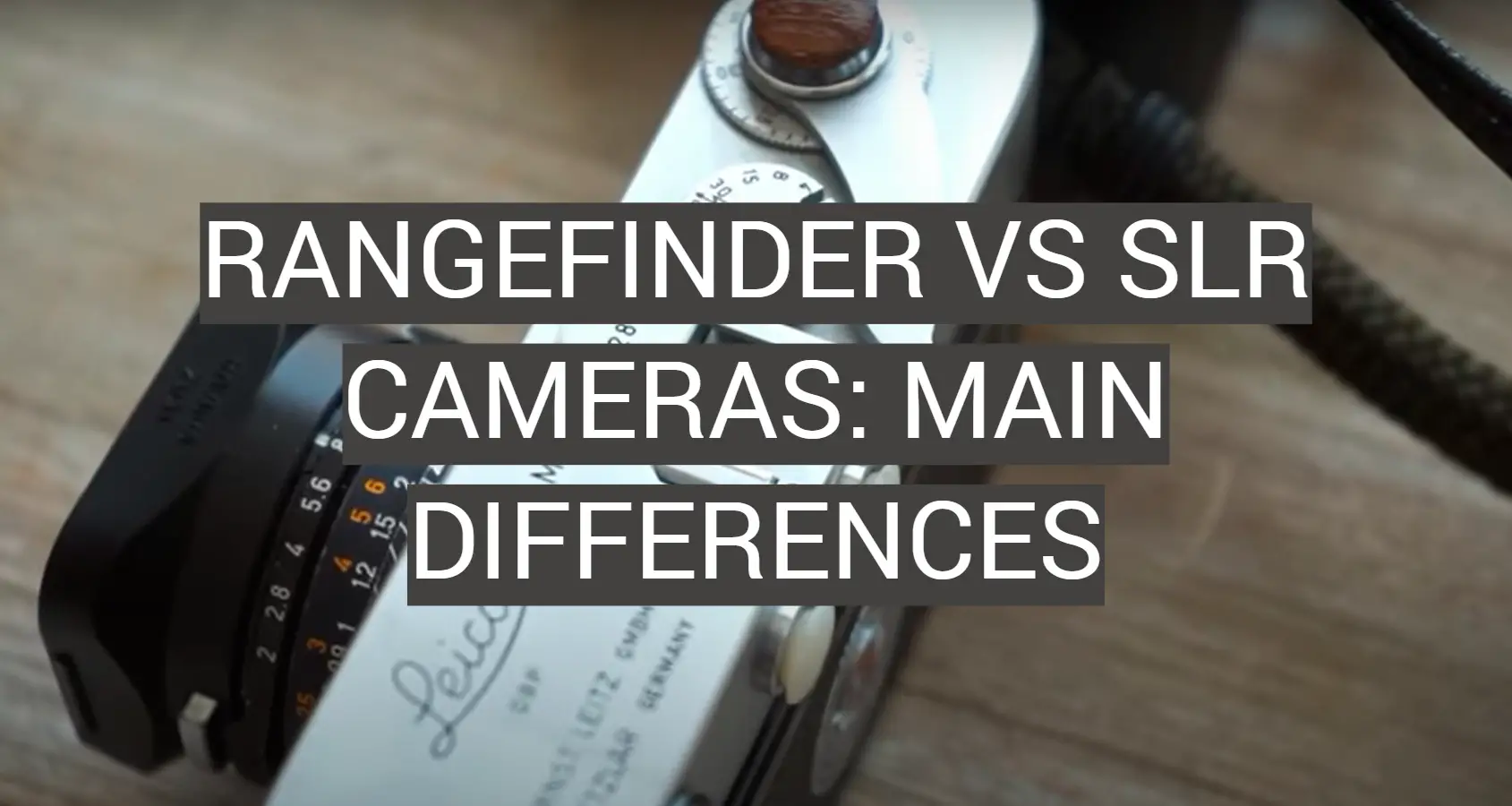
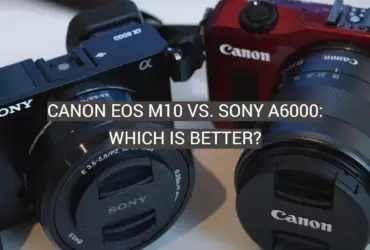

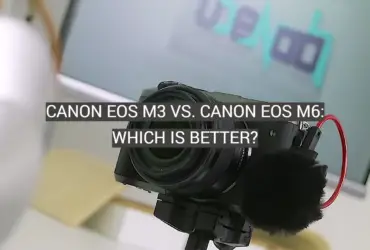
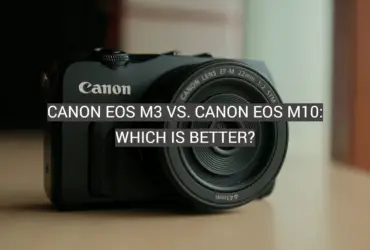

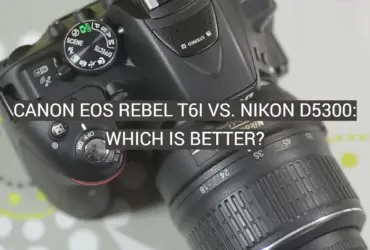
Leave a Reply